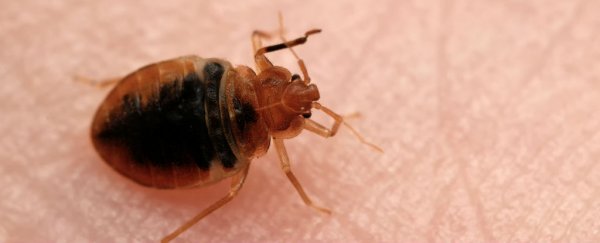If you live in a big city like New York, you're probably familiar - a little too familiar, perhaps - with bed bugs. As their name suggests, they start by infesting the places we sleep.
Within weeks, the blood-sucking creatures have turned an entire apartment into an itchy nightmare. And their numbers are on the rise.
Since the early 2000s, bed bug infestations have grown more common in the US, the UK, Canada, and Europe, according to the US Centres for Disease Control and Prevention (CDC).
Part of the reason? They've evolved resistance to our defences against them. The bed bugs of today, for example, have thicker, waxier exoskeletons (to shield them from insecticides) and faster metabolisms, to beef-up their natural chemical defences.
They're also being transported with increasing frequency by people travelling internationally, according to the British health agency NHS.
As they follow us across the globe, the pests get tougher. "In a way, we created the modern bed bug: it evolved to live on us and to follow us," science writer Brooke Borel explained in her recent book, Infested.
From cave to city
Bed bugs didn't always use to be the terrifying critters we know today. For decades, we lived in peace, undisturbed by these tiny creatures of the night. Our cave-dwelling ancestors, in fact, got along perfectly fine with bed bugs. Back then, biologically speaking, they were practically a different species.
Yet as humans migrated out of caves and into cities over thousands of years, we brought bed bugs along for the ride.
Not surprisingly natural selection began to influence their characteristics: the critters with traits that made them better able to survive in their new digs outlived their peers who weren't as well suited for the urban lifestyle.
These new bugs were more active at night, when humans sleep, and had longer, thinner legs for hopping away from us quickly.
Bed bugs are still evolving
Scientists still aren't entirely sure why bed bugs have started to come back so strongly in the past decade, Borel writes, but what we do know is that people are playing an important role in their recent return.
It all began shortly after World War II when scientists created the powerful insecticide DDT. We managed to temporarily wipe out tons of insects, including bed bugs, writes Borel. But all the while, their resistance to insecticides grew.
Then, as international travel got more common, bed bugs hitched a ride on everything from travellers' shoes to their luggage, spreading across the globe.
How to spot a bed bug
Adult bed bugs are flat, oval-shaped, and visible to the naked eye, according to the NHS. Their colour can range from dark orange to red or brown.
Female bed bugs can lay up to 300 eggs over the course of their lifetime. The eggs stick to surfaces and hatch after about 10 days. Baby bed bugs grow into adults in roughly six to eight weeks, all the while shedding their skin.
If you have a bed bug infestation, you can typically spot these shells, which appear wrinkly and light brown, on your bedding.
Bed bugs aren't limited to hotels or hostels and can be found in all types of housing, the NHS reports.
If you think you have a bed bug infestation, the NHS recommends getting in touch with your local pest-control company.
This article was originally published by Business Insider.
More from Business Insider:
